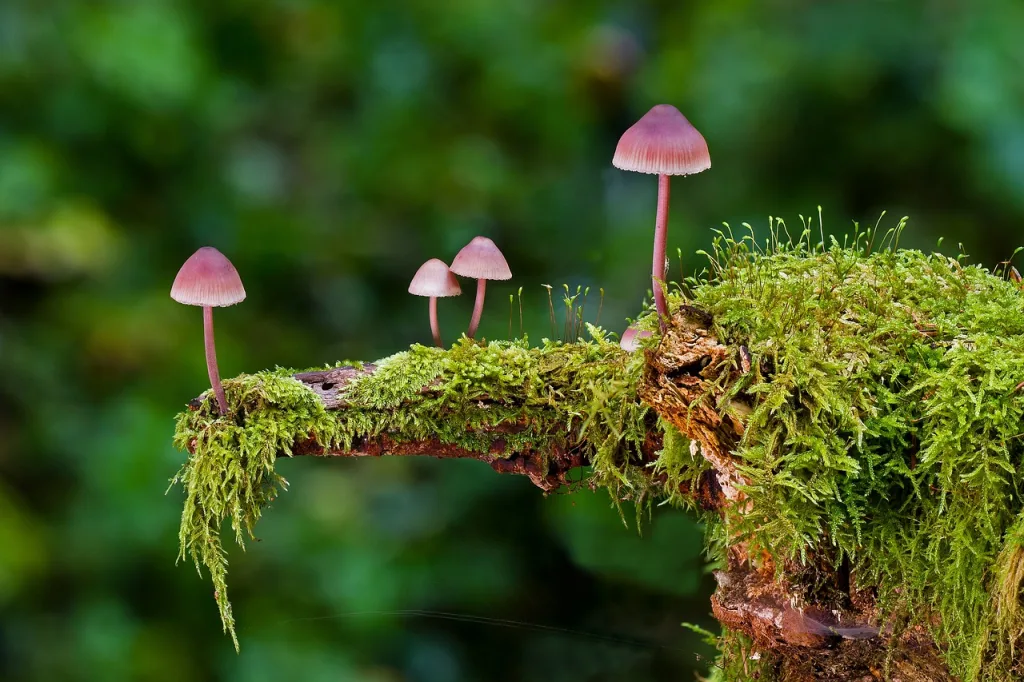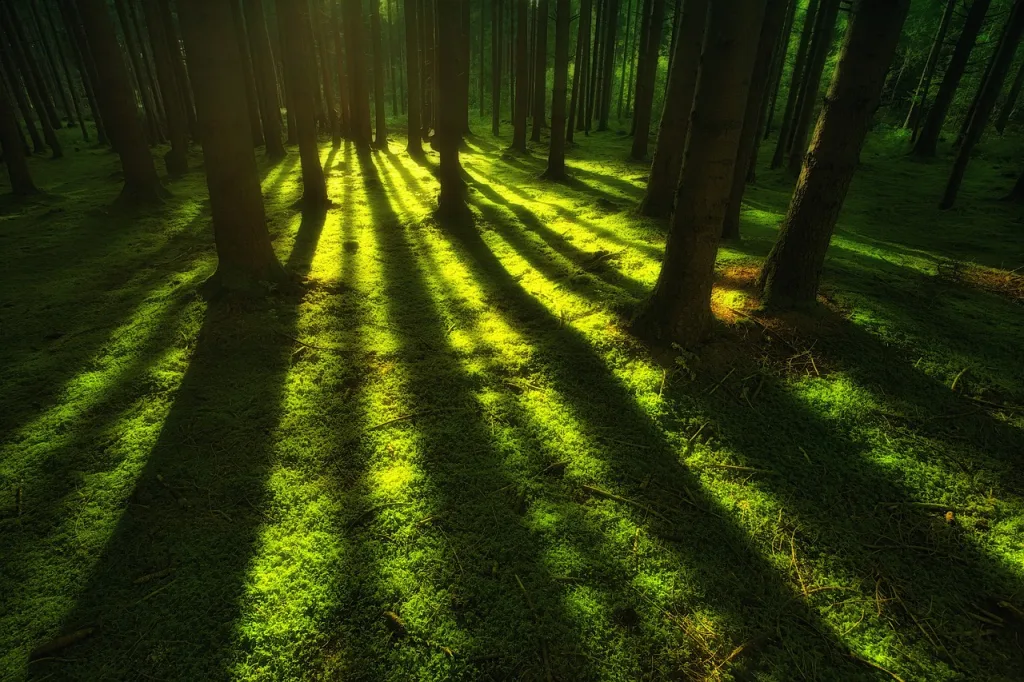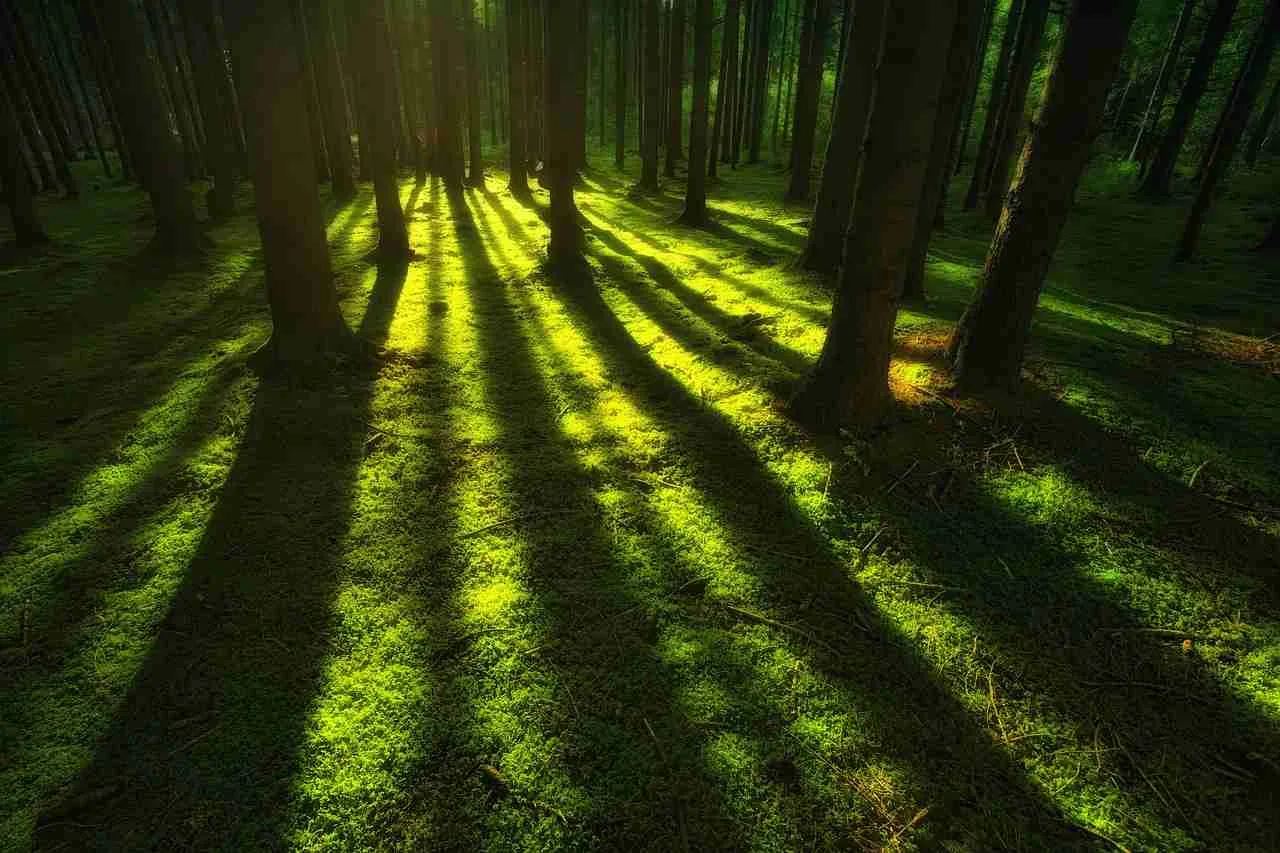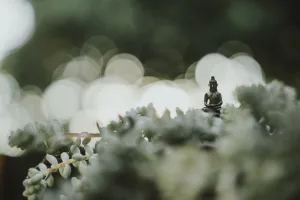Have you ever wondered what types of moss are commonly used in Zen gardens? Moss is an essential element in creating a peaceful and serene atmosphere in these traditional Japanese gardens. The delicate green carpet of moss not only adds visual beauty but also serves as a symbol of tranquility and harmony with nature. In this article, we will explore some of the most commonly used moss types in Zen gardens, allowing you to appreciate the artistry and find inspiration for your own garden oasis.

Understanding Moss in Zen Gardens
A Zen garden is a serene and peaceful space designed to evoke a sense of tranquility and meditation. Moss, with its rich green color, soft texture, and ability to thrive in shady and moist conditions, is a crucial element in creating the harmonious atmosphere of a Zen garden. In this article, we will explore the definition of moss, its significance in Zen gardens, and the varieties of moss that are suitable for these gardens.
Definition of Moss
Moss is a type of small, non-vascular plant that belongs to the Bryophyte division. Unlike other plants that have roots, stems, and leaves, mosses have a simple structure consisting of a thin layer of leaf-like structures and rhizoids that anchor them to surfaces. They propagate through spores rather than seeds and are found in diverse habitats worldwide, from the damp forests to rocky crevices.
The Significance of Moss in Zen Gardens
In Zen philosophy, simplicity and naturalness are highly valued. Moss perfectly embodies these principles. Its low-growing and delicate nature represents a sense of humility and modesty, which are essential virtues in the practice of Zen Buddhism. Moss also adds beauty and a sense of age to a garden, as it often colonizes rocks and other hard surfaces, creating a weathered and timeless appearance.
Furthermore, moss creates a lush green carpet that covers the ground, enhancing the overall sense of harmony and tranquility in a Zen garden. It absorbs and retains moisture, helping to create a cool and moist environment, which is highly beneficial for meditation and relaxation.
Varieties of Moss Suitable for Zen Gardens
There are numerous varieties of moss that can be used in Zen gardens, each with its own unique characteristics and aesthetic appeal. When choosing moss for your Zen garden, consider factors such as growth patterns, adaptations to weather conditions, and the different colors and textures they offer.

Characteristics of Moss Used in Zen Gardens
Growth Patterns
Mosses can be categorized into two main growth patterns: acrocarpous and pleurocarpous. Acrocarpous mosses form dense, mossy mounds or cushions, with their growth concentrated at the top. Pleurocarpous mosses, on the other hand, have a creeping or trailing growth habit, spreading out horizontally and forming lush carpets.
Adaptations to Weather Conditions
Mosses can adapt to a wide range of weather conditions. Some varieties are more tolerant of sun exposure and can withstand drier conditions, while others prefer shade and moist environments. By selecting moss species that are well-suited to your specific climate and garden conditions, you can ensure their longevity and vitality in your Zen garden.
Different Colors and Textures
Moss comes in an array of shades of green, ranging from vibrant emerald to dark forest green. Some species even have a hint of golden or reddish tones. The textures of moss can also vary greatly, from soft and velvety to wiry and feathery. Incorporating a mix of moss varieties with different colors and textures can add depth and visual interest to your Zen garden.
Acrocarpous Mosses in Zen Gardens
Description and Features of Acrocarpous Mosses
Acrocarpous mosses, also known as upright mosses, are characterized by their vertical growth habit. They form dense cushions or tufts, resembling miniature forests or miniature landscapes. The vertical growth allows them to capture sunlight more efficiently, enabling them to thrive in areas with limited light.
Popular Varieties of Acrocarpous Mosses
An excellent choice for Zen gardens is the Haircap Moss (Polytrichum commune), which forms distinct tufts and has soft, hair-like leaves. Another popular acrocarpous moss is the Mood Moss (Dicranum scoparium), which grows in dense clumps and features delicate, feathery foliage.
Care and Maintenance of Acrocarpous Mosses
Acrocarpous mosses require minimal maintenance in a Zen garden. They prefer slightly acidic soil and a consistent level of moisture. Regular misting can help maintain the desired level of humidity, especially in dry climates. It’s important to avoid excessive foot traffic on acrocarpous mosses to prevent compaction and damage to their delicate growth.

Pleurocarpous Mosses in Zen Gardens
Pleurocarpous Mosses Overview
Pleurocarpous mosses are characterized by their creeping or trailing growth habit. They spread out horizontally, forming dense, lush carpets. This growth pattern makes them ideal for covering large areas and creating a seamless green surface in Zen gardens.
Favorite Types of Pleurocarpous Mosses
One of the most commonly used pleurocarpous mosses in Zen gardens is Cushion Moss (Leucobryum glaucum). It features soft and velvety foliage, creating a luxurious carpet-like texture. Another popular choice is the Fern Moss (Thuidium delicatulum), which has delicate, feather-like fronds that add a sense of grace and elegance to the garden.
Looking after Pleurocarpous Moss Types
Pleurocarpous mosses can be relatively low-maintenance in Zen gardens. They prefer moist and shady conditions, making them well-suited for areas with limited direct sunlight. It’s important to ensure proper drainage to prevent waterlogging, as excessive moisture can lead to the growth of unwanted mosses or algae. Regular watering and occasional trimming can help maintain the health and appearance of pleurocarpous mosses.
Commonly Found Mosses in Zen Gardens
Cushion Moss in Zen Gardens
Cushion Moss (Leucobryum glaucum) is a pleurocarpous moss that is often found in Zen gardens. Its ability to form dense, cushion-like mats makes it perfect for creating a soft and inviting ground cover. The vibrant green color and velvety texture of cushion moss add visual interest and a touch of luxury to a Zen garden.
Haircap Moss in Zen Gardens
Haircap Moss (Polytrichum commune) is an acrocarpous moss that is commonly used in Zen gardens. Its tall and upright growth habit creates a striking visual contrast to the low-growing pleurocarpous mosses. The hair-like leaves of this moss give it an interesting and unique texture, making it an excellent focal point in a Zen garden.
Fern Moss in Zen Gardens
Fern Moss (Thuidium delicatulum) is another pleurocarpous moss often found in Zen gardens. Its delicate and feathery fronds resemble miniature ferns, adding a sense of elegance and movement to the garden. The vibrant green color and lush, carpet-like growth of fern moss create a serene and enchanting atmosphere in a Zen garden.

How to Harvest Moss for Zen Gardens
Ideal Locations for Moss Harvesting
When harvesting moss for your Zen garden, it’s important to choose locations that are abundant in moss and free from pollutants. Forest floors, shaded rocks, and damp areas are excellent places to find healthy and vibrant mosses. Make sure to obtain permission if you are harvesting moss from public or private property.
Sustainable Moss Harvesting Practices
To ensure the sustainable harvesting of moss, it’s essential to follow a few guidelines. First, harvest moss only in small quantities, taking care not to disturb the surrounding ecosystem. Avoid removing entire colonies or moss patches, as this can disrupt the natural balance. Instead, gently detach small pieces or fragments, allowing the remaining moss to regenerate and recover.
Transplanting Moss into Zen Gardens
To transplant the harvested moss into your Zen garden, prepare the planting area by removing any debris or weeds. Create a smooth and level surface, ensuring good soil contact for the moss. Gently press the moss fragments onto the soil, taking care not to damage the delicate structures. Mist the transplanted moss regularly to maintain a moist environment and promote root establishment.
The Role of Moss in the Ecosystem of Zen Gardens
Moss as a Soil Protector
Moss plays a crucial role in protecting the soil in Zen gardens. The dense growth of moss forms a natural barrier that helps prevent erosion caused by wind or water. The intricate web of moss roots holds the soil particles together, preventing them from being washed away during rainstorms or blown away by strong winds.
Moss Contribution to Humidity and Microclimate
One of the reasons moss is highly valued in Zen gardens is its ability to create a humid microclimate. Moss absorbs and retains moisture, releasing it gradually into the atmosphere through a process called transpiration. This gentle release of moisture helps maintain a cool and humid environment, promoting the growth of other plants and creating a comfortable and serene atmosphere in the garden.
Moss as a Habitat for Insects
Moss provides a habitat for many small insects and invertebrates, contributing to the overall biodiversity of Zen gardens. The moist and sheltered environment created by moss attracts various creatures such as springtails, mites, and beetles. These insects play a vital role in the ecosystem by decomposing organic matter, pollinating flowers, and serving as a food source for other animals.

Challenges of Growing Moss in Zen Gardens
Common Moss Diseases and Pests
While mosses are generally hardy and resistant to diseases and pests, they can still face certain challenges in Zen gardens. Excessive moisture, poor air circulation, and the accumulation of organic matter can create favorable conditions for mold, fungi, and moss-specific diseases. Regular inspection and proper maintenance can help identify and address any issues promptly.
Effect of Weather and Climate Change on Moss
Mosses are highly adapted to specific environmental conditions, and changes in weather and climate can impact their growth and health. Excessive heat or prolonged dry periods can cause moss to turn brown or go dormant. On the other hand, too much shade, excessive rainfall, or high humidity can favor the growth of unwanted mosses or algae. Monitoring weather patterns and providing appropriate care can help mitigate these challenges.
Techniques for Encouraging Moss Growth
To encourage moss growth in Zen gardens, it’s essential to create the optimal conditions for their development. Ensure that the planting area has sufficient shade, as moss prefers indirect or filtered sunlight. Moisture is crucial, so regular watering or misting is necessary, especially during dry periods. Avoid using chemical fertilizers, as mosses thrive in nutrient-poor environments. Instead, focus on maintaining the appropriate soil pH and organic matter levels.
Tips for Moss Care in Zen Gardens
Proper Lighting for Moss
Proper lighting is crucial for the health and vitality of moss in Zen gardens. While moss prefers shade or filtered light, it still requires some indirect sunlight to carry out photosynthesis. Avoid exposing moss to intense or direct sunlight, as this can cause it to dry out or become discolored. Monitor the lighting conditions in your garden and adjust placements or provide shade if necessary.
Watering and Nutrient Needs
Mosses have modest water and nutrient requirements, making them relatively low-maintenance plants. Providing consistent and adequate moisture is essential, especially during drier periods. Regular misting or light watering can help maintain the desired level of humidity. Mosses do not rely heavily on nutrients, so avoid over-fertilizing, as excessive nutrients can encourage the growth of unwanted mosses or algae.
Handling Moss Health Problems
If you notice any signs of moss health problems, such as discoloration, browning, or excessive growth of unwanted mosses or algae, take immediate action. Start by removing any debris or organic matter that may be affecting the moss’s health. Adjust watering and lighting conditions as needed. If mold or fungi are observed, treat the affected areas with natural remedies or consult a professional to prevent further damage.
Alternatives to Moss in Zen Gardens
Using Lichen in Zen Gardens
Lichens are a unique symbiotic organism consisting of fungi and algae or cyanobacteria. They have a similar appearance to moss and can be used as an alternative in Zen gardens. Lichens come in various colors and textures, offering a different aesthetic element compared to moss. They require similar growing conditions to moss, favoring shade and moisture.
Algae Variety Suitable for Zen Gardens
Algae, like moss, thrive in moist environments and can be utilized as an alternative in Zen gardens. Algae come in a wide range of colors, from vibrant green to shades of red and brown. They can be cultivated on rocks, in water features, or in designated areas within the garden. However, it’s important to control algae growth to prevent overgrowth or dominance over other plant species.
Appropriate Grasses for Zen Gardens
While moss is the traditional choice for ground cover in Zen gardens, certain grasses can also be used as an alternative. Ornamental grasses, such as mondo grass or fountain grass, can create a similar low-growing and lush effect. However, it’s important to choose grasses that are well-suited to your climate and growing conditions, as some grasses may require more sun or water than moss.
In conclusion, moss plays a vital role in creating the serene and harmonious atmosphere of Zen gardens. Its simplicity, naturalness, and ability to thrive in various conditions make it an ideal choice for ground cover. By understanding the different varieties of moss, their growth patterns, care requirements, and the role they play in the ecosystem, you can create a Zen garden that is not only visually stunning but also conducive to peace and tranquility. Whether you choose acrocarpous or pleurocarpous moss, ensure proper care, and consider sustainable harvesting practices to maintain the beauty and longevity of this remarkable plant in your Zen garden.




